At least three killed in UPS cargo plane crash at Louisville airport in US
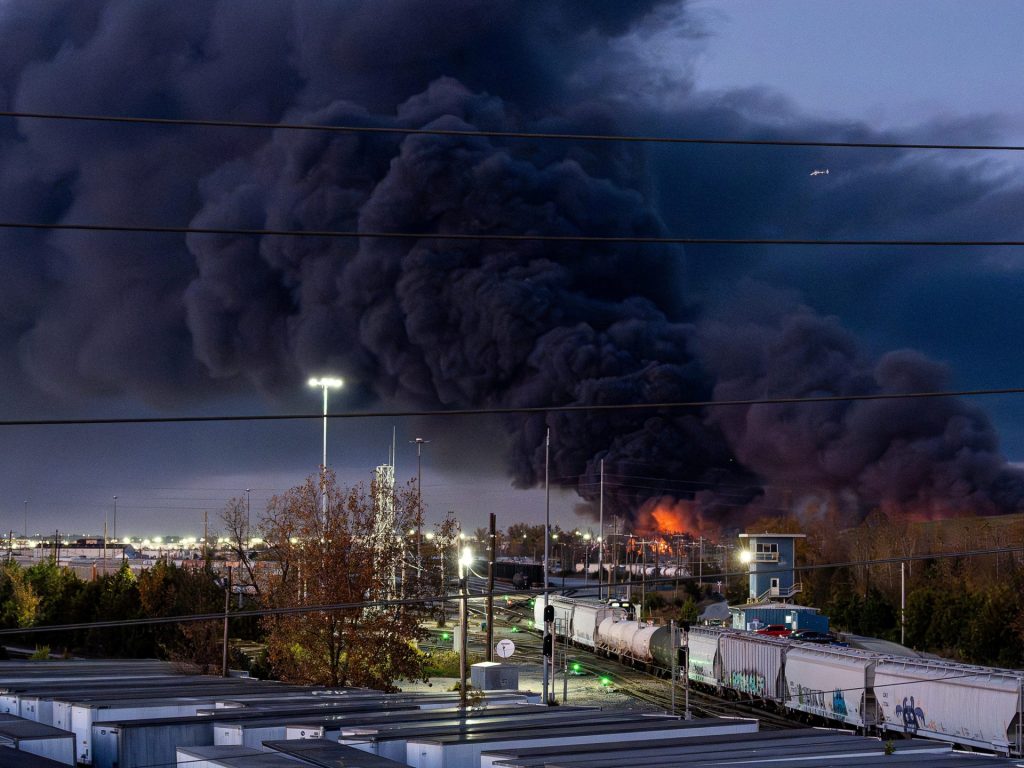
Kentucky Governor Andy Beshear said 11 people have also been injured and the number of casualties is likely to increase. Published On 5 Nov 20255 Nov 2025 Click here to share on social media share2 Share At least seven people were killed when a large, wide-body UPS cargo plane crashed while taking off from an airport in Louisville, Kentucky, igniting an enormous fire and causing “multiple injuries” on the ground, authorities said. UPS Flight 2976 crashed at about 5:15pm local time (22:15 GMT) on Tuesday as it was departing from Louisville’s Muhammad Ali airport, the US Federal Aviation Administration (FAA) said in a statement. Recommended Stories list of 4 itemsend of list UPS said in an initial statement that three crew members were on board the aircraft, but provided no information as to any casualties or injuries. The Associated Press news agency said that four of the seven people confirmed killed were not on board the aircraft. “Anybody who has seen the images, the video, knows how violent this crash is,” Kentucky Governor Andy Beshear said after earlier telling a news conference that three people were confirmed killed and the death toll was expected to rise. “We have at least 11 injuries, some of them very significant, that are being treated by local hospitals. Again, I think that number will get larger,” Beshear said. Beshear also said that the National Transportation Safety Board will launch an investigation into the crash, assisted by the FAA. Aerial footage of the crash site showed a long trail of debris as firefighters blasted water onto a huge fire, with smoke billowing from the disaster area. Beshear said the plane crashed directly into two local businesses – a petroleum recycling company and an auto parts company. Aerials: Aftermath of UPS plane crashing at Louisville airport | Click on the image to read the full story https://t.co/rKvQXXrmvt — WLKY (@WLKY) November 4, 2025 Louisville Metro Police Department said in a post on social media that a “shelter-in-place” notice was issued for all locations within an 8km (5-mile) radius of the airport. Advertisement “We have every emergency agency responding to the scene. There are multiple injuries and the fire is still burning,” Louisville Mayor Craig Greenberg said in a post on social media. “There are many road closures in the area – please avoid the scene,” Greenberg said, describing the crash as “an incredible tragedy” for the local community. The Louisville airport is home to UPS Worldport, a global hub for the firm’s air cargo operations, which is reported to be the largest package handling facility in the world, with thousands of employees and some 300 cargo flights scheduled each day. The FAA said the stricken plane was a McDonnell Douglas MD-11 that was departing Louisville for Honolulu, Hawaii. Aircraft tracking site FlightRadar24 said the plane had flown from Louisville to Baltimore earlier on Tuesday before returning to Louisville. The Louisville airport said the airfield was closed after the incident. The Reuters news agency said the accident will likely disrupt UPS deliveries, and its major customers, including Amazon, Walmart and the United States Postal Service. Adblock test (Why?)
US kills two more people in latest strike on vessel in the Pacific
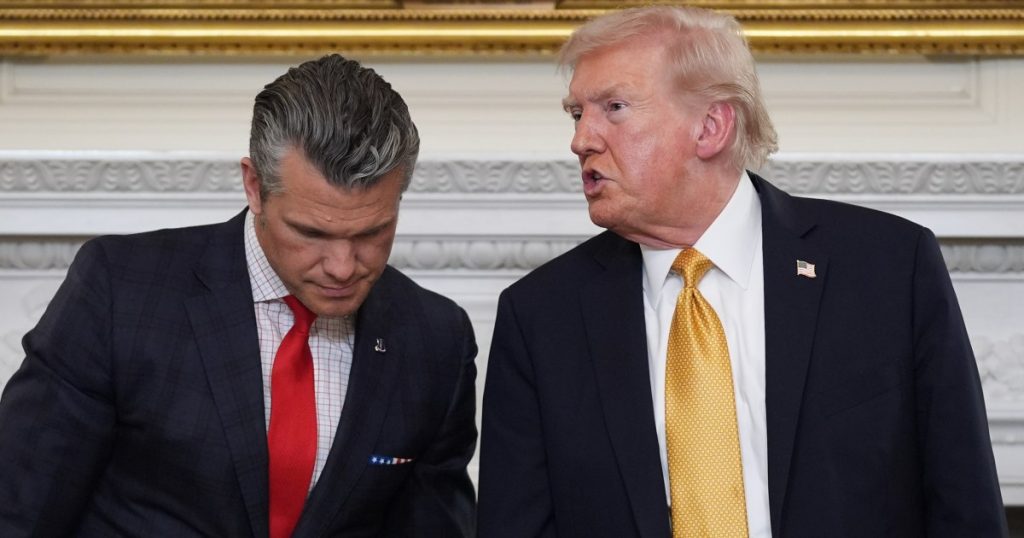
Legal experts says US attacks amount to extrajudicial killings even if those targeted are suspected of drug trafficking. Published On 5 Nov 20255 Nov 2025 Click here to share on social media share2 Share The United States has killed two people in another strike on a vessel in the Pacific, US Secretary of Defense Pete Hegseth said, bringing to at least 67 the number of people killed in US attacks on boats in the Caribbean and Pacific since early September. In a post on social media late on Tuesday, Hegseth alleged that the latest vessel attacked was involved in “illicit narcotics smuggling”, though legal experts have said that such attacks amount to extrajudicial killings, even if those targeted are suspected of drug trafficking. Recommended Stories list of 4 itemsend of list Describing the vessel as “transiting along a known narco-trafficking route, and carrying narcotics”, Hegseth said US forces attacked it in “international waters in the Eastern Pacific” on the orders of US President Donald Trump. Hegseth did not provide any evidence of drug trafficking, while a short aerial video of the attack showed what appeared to be a vessel stationary in the water before being hit by a missile and exploding in smoke and flames. The US military blanked out the video so that the vessel’s occupants could not be seen. “We will find and terminate EVERY vessel with the intention of trafficking drugs to America to poison our citizens. Protecting the homeland is our TOP priority,” Hegseth said in a post on X alongside the video. US military strikes since early September have now targeted at least 17 vessels – 16 boats and a semi-submersible – but the Trump administration has yet to make public any evidence that its targets were smuggling narcotics or posed any threat to the US. Advertisement While both Republican and Democratic Party lawmakers have demanded clarity on the legal basis for the US to carry out such attacks in international waters, governments and victims’ families in Latin America have decried the strikes and accused Washington of killing mostly fishermen. Last week, United Nations human rights chief Volker Turk called for the US to halt its attacks to “prevent the extrajudicial killing of people aboard these boats”. The announcement of the latest killings comes as the USS Gerald R Ford aircraft carrier heads towards the Caribbean to join a US military build-up in Latin America, which Washington has mobilised to target so-called drug cartels targeting the US. Venezuelan President Nicolas Maduro, who Washington says is involved in drug trafficking, has accused the US of using its latest iteration of the “war on drugs” as a pretext to topple him from power. During an interview that aired on Sunday on the US’s CBS channel, Trump was asked if Maduro’s days as president were numbered. “I would say, yeah. I think so, yeah,” the president said. But he did not answer a question on whether he would order strikes inside Venezuela. Trump has previously threatened to attack targets on land related to the drug trade in what would be a serious escalation of US military intervention in Latin America. Adblock test (Why?)
Belgian airports disrupted by unidentified drone flights
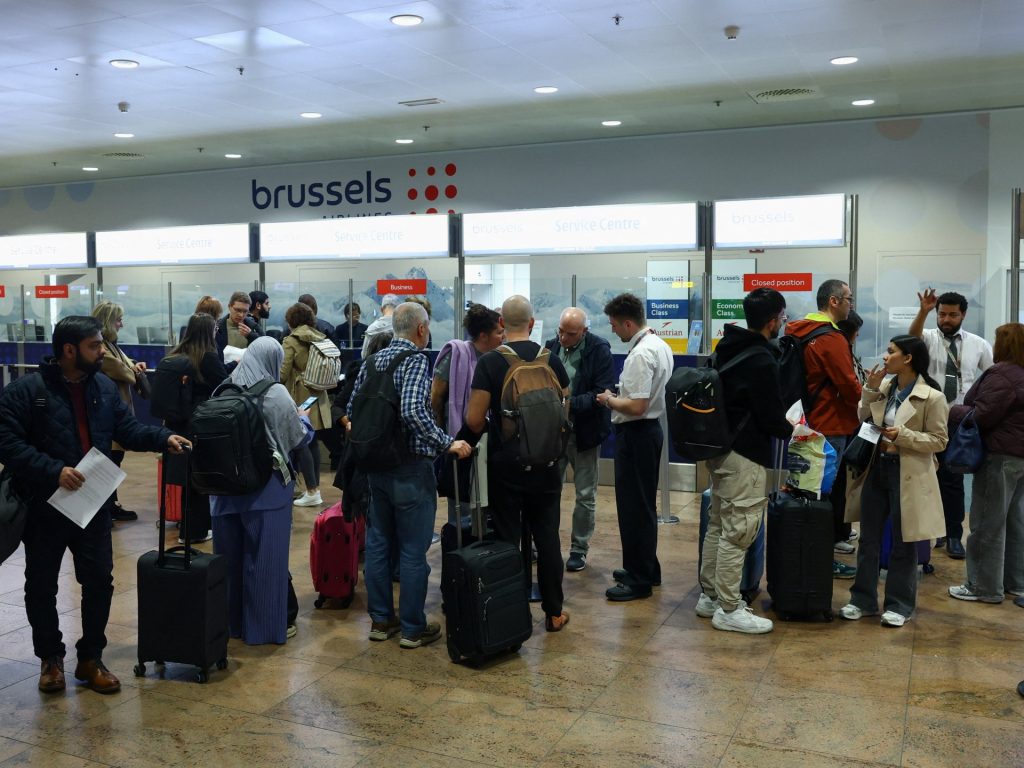
Belgium’s Brussels and Liege airports were forced to shut down twice due to mysterious drone sightings on Tuesday. Published On 5 Nov 20255 Nov 2025 Click here to share on social media share2 Share Belgium’s air traffic was severely disrupted after drone sightings forced two major airports to temporarily suspend operations as a security precaution. A drone was first spotted near Brussels airport at 8pm (19:00 GMT) on Tuesday evening, followed by another incident at the nearby Liege airport, one of Europe’s largest cargo airports, according to Belgium’s public broadcaster RTBF. Recommended Stories list of 4 itemsend of list Both airports suspended operations for an hour and reopened at 9pm (20:00 GMT), only to shut down again at 10pm (21:00 GMT) after a second sighting, RTBF said. Both airports resumed normal operations at 11pm (22:00 GMT). Brussels airport said that the shutdowns may still impact air traffic on Wednesday in a notice on its website. “Following drone sightings on Tuesday evening, flight operations at Brussels Airport were suspended for safety reasons,” the notice said. “This disruption has led to delays and some flight cancellations and might still impact flight operations on Wednesday morning.” Flight Aware, a US-based flight tracking website, counted 59 cancelled and 43 delayed flights at Brussels airport on Tuesday. Some flights were also diverted to nearby airports, according to RTBF. Authorities have not released limited information about the drone sightings, but Minister of the Interior Bernard Quintin said that an investigation was under way, according to RTBF. “We cannot accept that our airports are disrupted by unauthorised drone flights. This requires a coordinated, national response,” he said. The drone sightings in Brussels and Liege follow a similar incident on Saturday, when three unauthorised drones were spotted near a Belgian military base, according to Minister of Defence Theo Francken. Advertisement Francken said on X that he believed the incident was “not a simple flyover, but a clear command targeting [the] Kleine Brogel” airbase in northwest Belgium. He said the drones were flying at a high altitude and could not be stopped with a drone jammer. They also evaded pursuit by a helicopter and police vehicle, he said. Since September, Europe has been hit with a wave of mysterious drone sightings near civilian airports and military facilities in Denmark, Germany, and Norway. Denmark’s intelligence service has linked the drone flights to Russia, and described them as a form of hybrid warfare intended to “put pressure on [Europe] without crossing the line into armed conflict in a traditional sense”, according to Reuters. Adblock test (Why?)
Nigeria pushes back on Trump’s claims over Christian killings
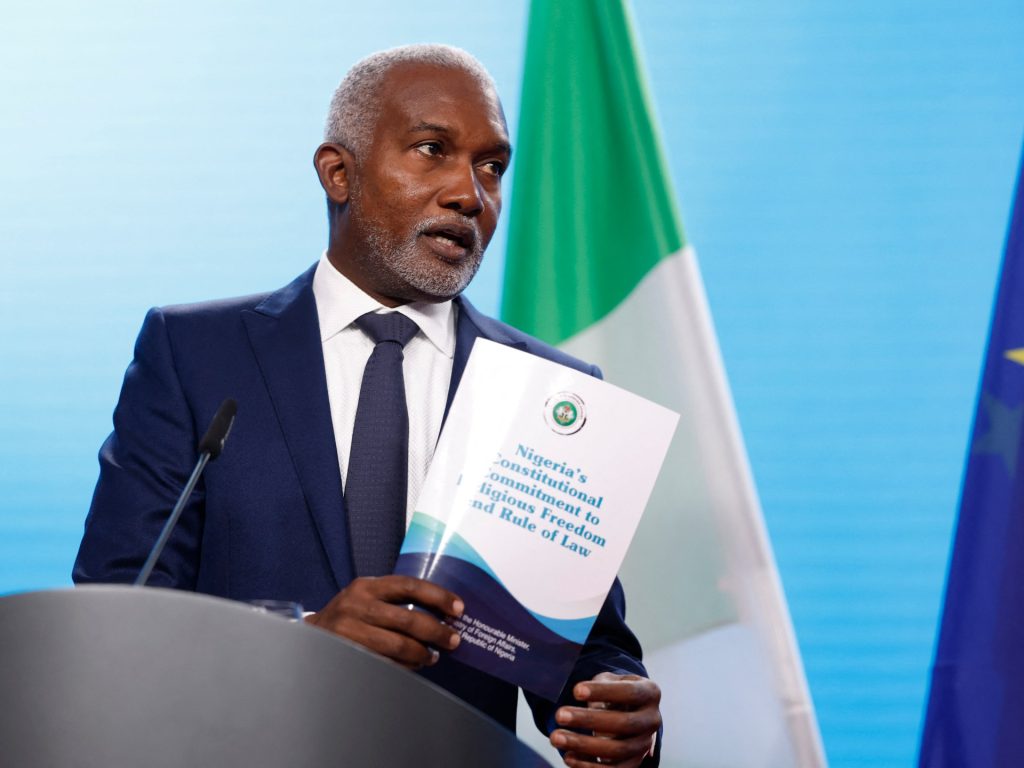
Foreign Minister Yusuf Tuggar says Nigeria’s constitution protects against religious persecution after claim by US President Donald Trump. The Nigerian government has dismissed claims made by US President Donald Trump about the persecution of Christians in the West African nation, insisting that religious freedom is fully protected under the country’s constitution. Responding to a reporter’s question at a news conference in Berlin on Tuesday, Nigerian Foreign Minister Yusuf Tuggar held up a document whose cover read “Nigeria’s Constitutional Commitment to Religious Freedom and Rule of Law”. Recommended Stories list of 3 itemsend of list “All the answers are in there. This is what guides us,” Tuggar said, speaking alongside Germany’s Foreign Minister Johann Wadephul. “It’s impossible for there to be religious persecution that can be supported in any way, shape or form by the government of Nigeria at any level.” Tuggar’s comments come after Trump wrote on social media on Saturday that if the Nigerian government “continues to allow the killing of Christians”, the US would stop all aid to the country. Trump added that he had instructed the so-called Department of War “to prepare for possible action”. And on Sunday, Trump doubled down, saying Washington could deploy troops or conduct air strikes. “They are killing a record number of Christians in Nigeria,” he said. “We are not gonna allow that to happen.” The threats came after the US president had redesignated Nigeria as a Country of Particular Concern – a label the US government gives to countries seen as responsible for severe violations of religious freedom. Trump’s assertions echo claims that have gained traction among right-wing and Christian evangelical circles in the past months. US Senator Ted Cruz, a Trump ally, blamed Nigerian officials for what he called “Christian massacres” and introduced in September the Nigeria Religious Freedom Accountability Act of 2025, which, he said, aims to hold officials who “facilitate Islamic Jihadist violence and the imposition of blasphemy laws” accountable. Advertisement While admitting a problem with security issues, Nigerian officials rebuked Trump’s claims, saying that people across all faiths, not just Christians, are victims of armed groups’ violence. “The characterization of Nigeria as religiously intolerant does not reflect our national reality,” said Nigerian President Bola Tinubu, a Muslim from southern Nigeria who is married to a Christian pastor. About 238 million people live in Nigeria, Africa’s most populous nation. Around 46 percent of the population is Muslim, largely residing in the north, and about 46 percent are Christian, mostly located in the south, according to the Association of Religion Data Archives. For more than a decade, Boko Haram and other armed groups have clashed in the northeast, forcing millions of people from their homes. Since Tinubu took power two years ago, pledging stronger security, more than 10,000 people have been killed there, according to Amnesty International. In the centre, there are increasing attacks on predominantly Christian farming communities by herders from the rival Fulani pastoral ethnic group, which is predominantly Muslim. The attacks there are mostly over access to water and pasture. Adblock test (Why?)
‘On the brink of making history’: Zohran Mamdani casts vote in NYC election
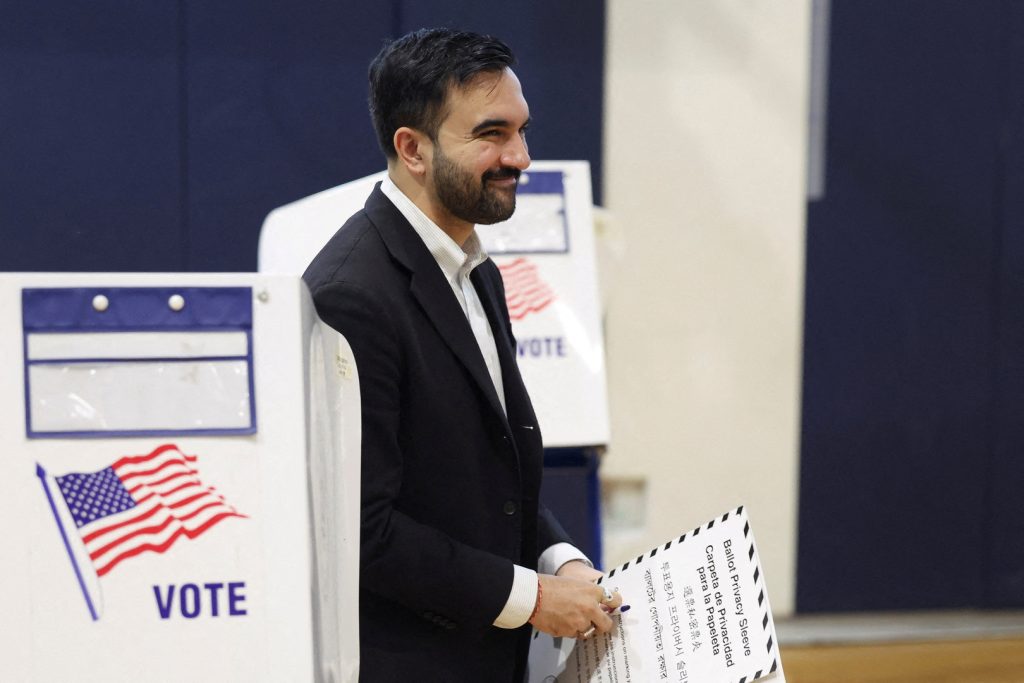
NewsFeed Democratic candidate for New York City mayor, Zohran Mamdani, cast his ballot at the Frank Sinatra School of the Arts in Astoria, Queens, on Election Day as voters headed to the polls on Tuesday. Mamdani told reporters, “We are on the brink of making history.” Published On 4 Nov 20254 Nov 2025 Click here to share on social media share2 Share Adblock test (Why?)
Police clash with pro-Palestinian protesters at Sydney defence expo
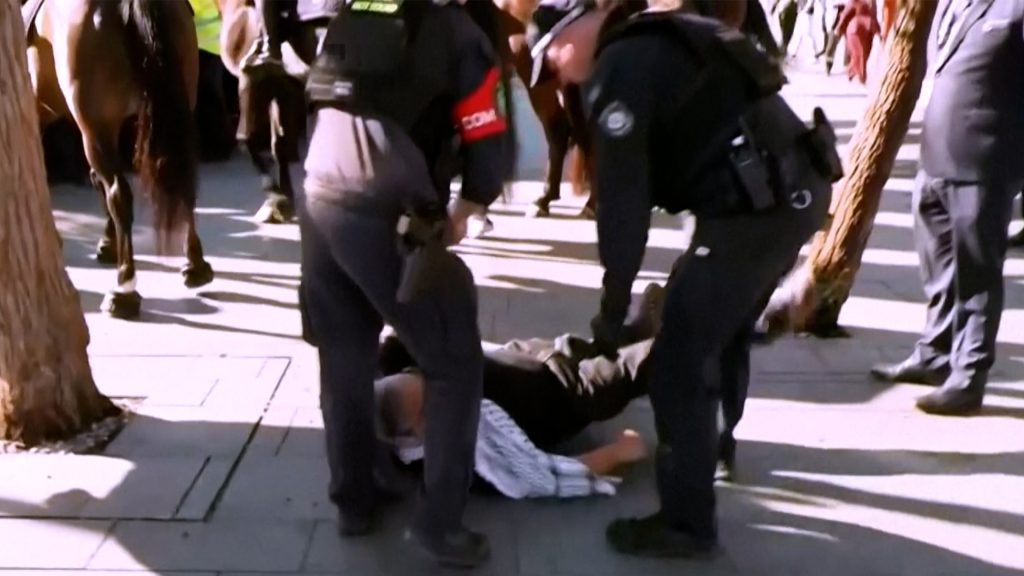
NewsFeed Police in Australia broke up a protest against Israeli companies taking part in a defence show in Sydney. At least one pro-Palestinian protester was seen dragged along the ground by officers. Published On 4 Nov 20254 Nov 2025 Click here to share on social media share2 Share Adblock test (Why?)
Ukraine receives Patriot systems to bolster air defences against Russia
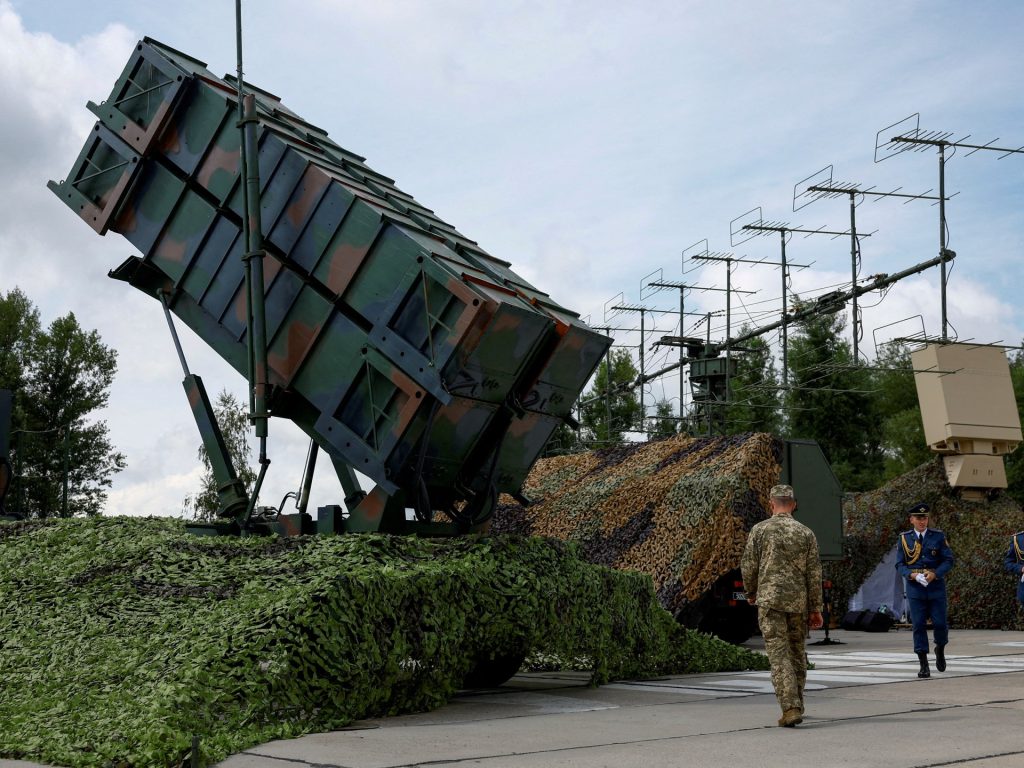
President Zelenskyy announces arrival of Patriots amid Russia’s continuous bombing of infrastructure and urban areas. By News Agencies Published On 3 Nov 20253 Nov 2025 Click here to share on social media share2 Share President Volodymyr Zelenskyy says Ukraine has received more United States-made Patriot air defence systems to help it counter Russian attacks. The sophisticated Patriot systems are the most effective weapons against Russian missiles that have been used to kill thousands of people in Russia’s war on Ukraine, launched almost four years ago. Recommended Stories list of 4 itemsend of list Zelenskyy had pleaded with Western partners to provide more of these systems, but production limitations and the need to maintain stockpiles slowed their delivery. “More Patriots are now in Ukraine and being put into operation,” Zelenskyy posted on social media late on Sunday. “Of course, more systems are needed to protect key infrastructure sites and our cities across the entire territory of our state.” NATO is coordinating regular deliveries of large weapons packages to Ukraine, with European allies and Canada buying much of the equipment from the US, which has greater stocks of available military material as well as more effective weapons. The Trump administration is not providing arms to Ukraine as readily as his predecessor, Joe Biden, did. Latest attacks In a late-night attack, Russian drones killed a man and injured five of his family members, including two children, in Ukraine’s northeastern Sumy region. Two women were also injured in a separate Sumy attack. Overnight into Monday, Russia launched 12 missiles of various types and 138 strike and decoy drones, Ukraine’s air force said. “The Russians cynically targeted people – deliberately, at night, while they were sleeping,” regional head Oleh Hryhorov wrote on Telegram in response to the attacks. Advertisement Russian missiles started a fire at a business in the central Dnipro region, injuring one man, regional head Vladyslav Haivanenko said. Russia has also targeted Ukraine’s energy supply to deny civilians heat and running water in winter, as well as to disrupt industrial production of Ukraine’s newly developed drones and missiles. Its drones hit energy infrastructure in the southern Mykolaiv region. Meanwhile, Ukrainian forces struck Russia’s Saratov oil refinery overnight and started a fire, according to the General Staff of the Ukrainian Armed Forces. It was Ukraine’s fourth attack on the Saratov installation in almost seven weeks. The refinery, located some 500km (300 miles) from the border, can process several million metric tonnes of oil annually. Ukraine also said it hit Russian military logistical facilities in the occupied region of Luhansk. Zelenskyy claimed last week that long-range strikes on Russian refineries have reduced Moscow’s oil refining capacity by 20 percent. Russia claimed on Monday that its troops had advanced in the Ukrainian city of Pokrovsk, a transport and logistics hub that Moscow’s forces have been seeking to capture for more than a year. Russia’s Defence Ministry said its soldiers were destroying what it described as surrounded Ukrainian formations near Pokrovsk’s railway station and industrial zone, and had entered the city’s Prigorodny area. Adblock test (Why?)
Hundreds of children detained in the occupied West Bank
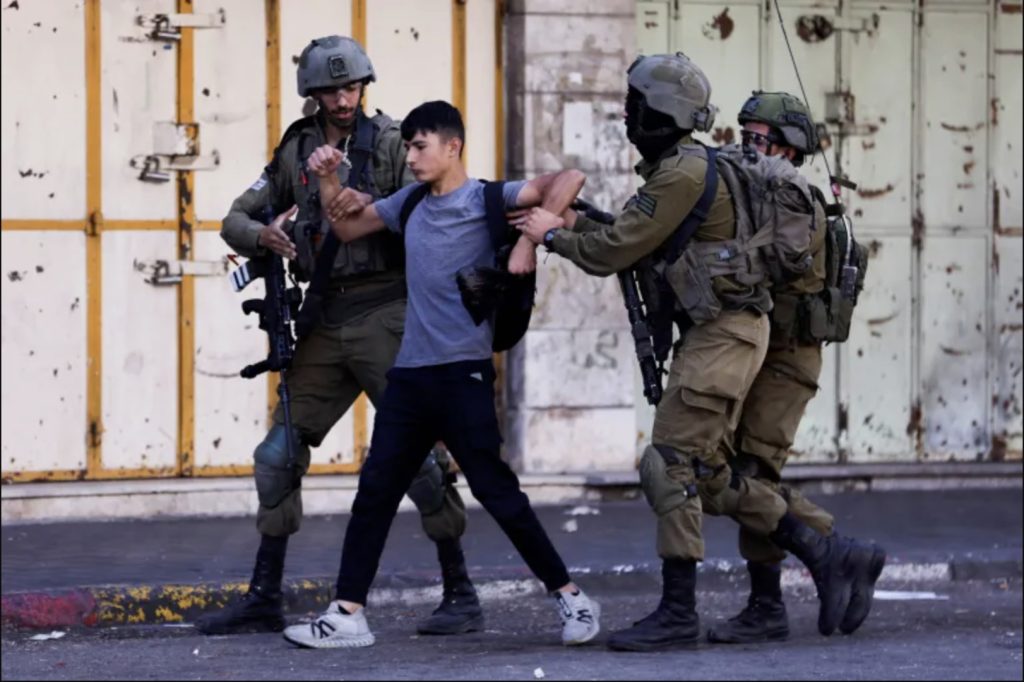
NewsFeed Israel is holding a record 360 Palestinian children from the occupied West Bank in its prisons, many without charge or trial, in what rights groups call a system of control and abuse. Families say the detentions, marked by torture and neglect, are meant to crush Palestinians. Published On 3 Nov 20253 Nov 2025 Click here to share on social media share2 Share Adblock test (Why?)
New light shed on el-Fasher horror as survivors arrive in Sudan’s Tawila
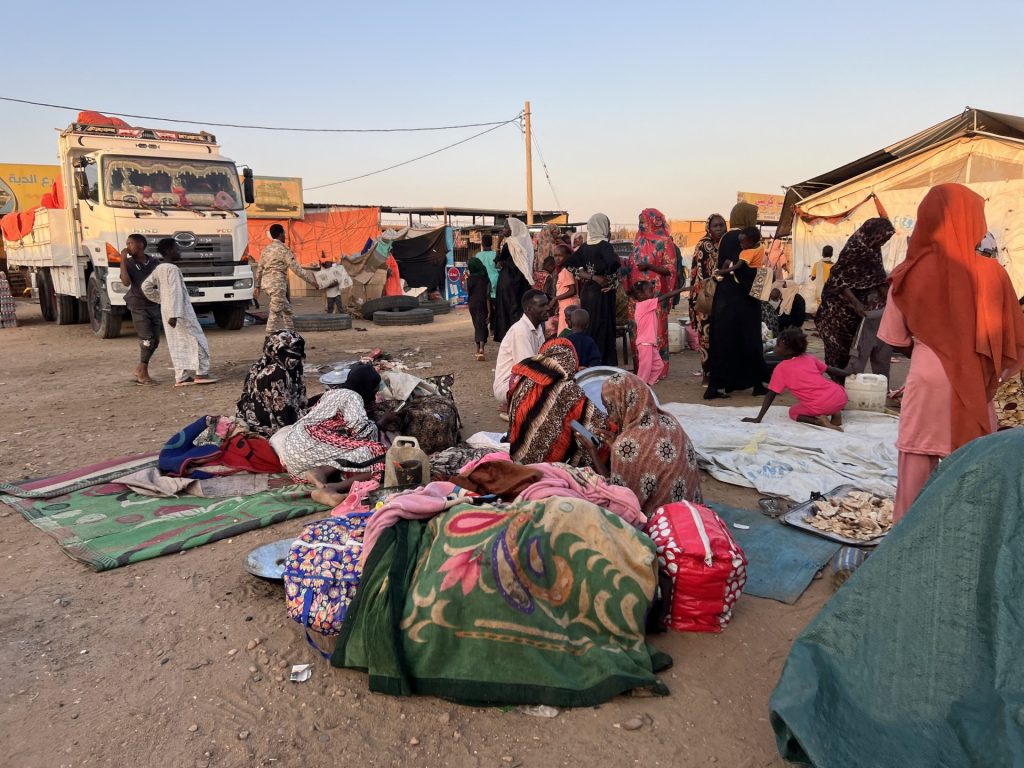
Streets littered with corpses, families separated by violence and survivors travelling for days without food or water. These are the accounts emerging from people who have fled the western Sudanese city of el-Fasher after it fell to paramilitary forces a week ago following an asphyxiating 18-month siege. Fatima Yahya has arrived in Tawila, a town west of el-Fasher in Sudan’s North Darfur State that is controlled by a neutral force in the conflict. She was still traumatised from the three days she went hungry before finally escaping. Her husband and uncle are missing. The memories of what happened in el-Fasher were difficult for her to put into words. Recommended Stories list of 3 itemsend of list “The dead bodies were everywhere – in the streets, inside houses and at the gates of many houses,” Yahya told Al Jazeera. “Wherever you are in el-Fasher, you will see dead bodies scattered.” Her testimony is one of several accounts from people who fled North Darfur’s capital after the Rapid Support Forces (RSF), a paramilitary group fighting Sudan’s regular army, captured the city on October 26. The RSF’s takeover gave the group control of the last major city in Darfur to have been held by the Sudanese armed forces (SAF), solidifying its grip across the vast western region. Since the fall of el-Fasher, a city that was home to more than 1 million people before the war, reports have mounted of mass executions, sexual violence and widespread looting. Satellite imagery analysed by Yale University’s Humanitarian Research Lab has identified at least 31 locations where objects consistent with human bodies have appeared since the city’s capture, accompanied by what researchers describe as reddish ground discolouration. Families separated in the chaos For those who fled, injuries from the initial fighting made their journey even more gruelling. Farhat Said left el-Fasher with her daughter despite both suffering injuries in artillery fire before the RSF’s final assault on the city. Her husband, who had suffered a severe hip fracture as a result of the bombardment, she said, had to be left behind. Advertisement “We had to stay for six to seven months under siege and the shelling and bombardment,” she told Al Jazeera. “It was difficult to move him at all,” she added. “When the fighting was too much and the shelling was unbearable, my son, who is 11 years old, asked me to run away from home to save our lives,” she said. Her son stayed behind with his father – the couple feared that even though he is a child, as a male, it would be too dangerous for him to cross RSF lines. The two-day journey on foot, which would have been impossible for Said’s husband, involved “walking and even running under the heavy shelling out of el-Fasher” and brought them through RSF checkpoints. The mother and daughter arrived in Tawila, roughly 65km (40 miles) west of el-Fasher, without money or possessions. Her daughter still requires medical treatment for her injuries, Said told Al Jazeera. Khadiga Abdalla, 46, experienced similar trauma. She lost her husband to the RSF bombardment a year ago and was herself wounded. The siege conditions had forced residents to survive on whatever they could find. “We did not get our usual food, the sorghum, for six months,” she told Al Jazeera. Abdalla said she was forced to eat ambaz, a residue left over from pressed oilseeds that are normally fed to livestock because there was no other food available in el-Fasher. After three days on the road without eating, Abdalla reached Tawila with her two children. One was immediately admitted to hospital, suffering from severe psychological trauma after witnessing the violence. Her brother’s children remain unaccounted for while an uncle was killed in the shelling. These accounts align with wider evidence of systematic violence. The World Health Organization (WHO) confirmed that at least 460 patients were killed in RSF attacks on the Saudi maternity hospital in el-Fasher. Health workers were also taken during the initial assault, according to WHO spokesperson Christian Lindmeier. Those reaching safety face severe health challenges. Medical teams from Doctors Without Borders working in Tawila have screened arriving children and said malnutrition was affecting all those under the age of five. Survivors bear physical evidence of their ordeal, including torture and bullet wounds from their escapes and digestive problems caused by months of eating food meant for livestock. Far fewer arrivals than expected The International Organization for Migration estimated that more than 70,000 people have been displaced from el-Fasher and the surrounding areas since October 26. However, humanitarian workers in Tawila, which already shelters more than 652,000 displaced people, reported that the arrivals there have been far smaller than el-Fasher’s population would suggest. Advertisement Yale’s Humanitarian Research Lab noted that unlike previous RSF takeovers across Darfur, such as the assault on the Zamzam displacement camp in April, there were no visible signs of a mass exodus from el-Fasher in recent imagery. When Zamzam’s estimated 500,000 inhabitants fled, researchers were able to identify hundreds of people and donkey carts on roads heading away from the camp. But with el-Fasher, “The majority of civilians are dead, captured or in hiding,” the Yale researchers concluded. International Committee of the Red Cross President Mirjana Spoljaric described the situation as “horrific” and warned that tens of thousands of people may be trapped without access to food, water or medical assistance. International calls for accountability Pope Leo XIV on Sunday joined growing international condemnation of the death and destruction in el-Fasher, denouncing “indiscriminate violence against women and children, attacks on unarmed civilians and serious obstacles to humanitarian action”. He called for an immediate ceasefire and the opening of humanitarian corridors. United States senators from both parties have demanded stronger action. Republican Senator Jim Risch, chairman of the Senate Foreign Relations Committee, called for the RSF to be formally designated as a “foreign terrorist organisation”, describing the violence as intentional rather than accidental. The RSF announced it has arrested several fighters, including a commander
Humanitarian disaster worsens across Sudan after RSF takes over el-Fasher
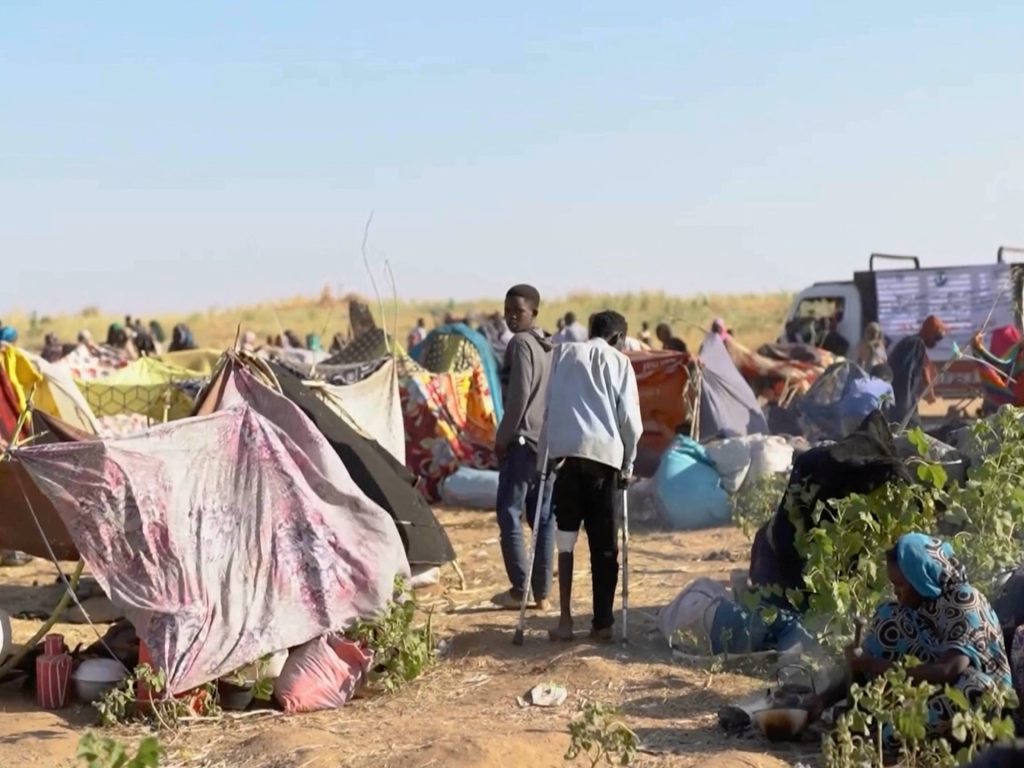
Many people remain unaccounted for while camps and towns surrounding el-Fasher are overwhelmed too. Millions of people across war-ravaged Sudan, particularly its western parts, remain in dire need of humanitarian aid as key generals show no intention of ending the civil war amid ongoing violence and killings in North Darfur’s el-Fasher. International aid agencies called on Sunday on the Sudanese armed forces (SAF) and the paramilitary Rapid Support Forces (RSF) to facilitate increased entry of aid while a roadmap by mediators has failed to produce a ceasefire so far. Recommended Stories list of 3 itemsend of list A week after the paramilitary force seized el-Fasher, the state capital of North Darfur, after an 18-month siege and starvation campaign, the situation remains catastrophic. Tens of thousands of civilians are still believed to be trapped in the final major city in the western region of Darfur to fall to the RSF while thousands more are unaccounted for after fleeing el-Fasher. Only a fraction of those who fled on foot from el-Fasher have made it to Tawila, a town roughly 50km (30 miles) away. Speaking to Al Jazeera from Tawila, an official with a France-based aid agency said only a few hundred more people have turned up in the town over the past few days. “Those are very small numbers considering the number of people who were stuck in el-Fasher. We keep hearing feedback that people are stuck on the roads and in different villages that are unfortunately still inaccessible due to security reasons,” said Caroline Bouvard, Sudan country director for Solidarites International. Bouvard said there is a “complete blackout” in terms of information coming out of el-Fasher after the RSF takeover and aid agencies are getting their information from surrounding areas where up to 15,000 people are believed to be stuck. Advertisement “There’s a strong request for advocacy with the different parties to ensure that humanitarian aid can reach these people or that at least we can send in trucks to bring them back to Tawila.” Many of the people who have managed to survive numerous RSF checkpoints and patrols to reach Tawila have reported seeing mass executions, torture, beatings and sexual violence. Some were abducted by armed men and forced to pay a ransom on pain of death. Many more have been forcibly displaced to the al-Dabbah refugee camp in Sudan’s Northern State. Some have been there for weeks. Reporting from the camp, Al Jazeera’s Hiba Morgan said over the past few days, more displaced people have poured in from el-Fasher, exacerbating the humanitarian situation. People are in need of food, clean water, medication and shelter as many are sleeping out in the open. Thousands more could turn to the camp as well as other surrounding areas over the coming days as people flee the slaughter by RSF fighters. The United States, Saudi Arabia, United Arab Emirates and Egypt, as mediators, have all condemned the mass killings and called for increased humanitarian assistance. “The RSF must stop engaging in retribution and ethnic violence; the tragedy in El Geneina must not be repeated,” the US Department of State said in a statement on Saturday in reference to the massacre of Masalit people in West Darfur’s capital. “There isn’t a viable military solution, and external military support only prolongs the conflict. The United States urges both parties to pursue a negotiated path to end the suffering of the Sudanese people,” it said in a post on X. US lawmakers have also called for action from Washington in the aftermath of the el-Fasher takeover by the RSF. Republican Senator Jim Risch of Idaho, chairman of the Senate Foreign Relations Committee, on Friday called for the US to officially designate the RSF as a “foreign terrorist organisation”. Adblock test (Why?)

